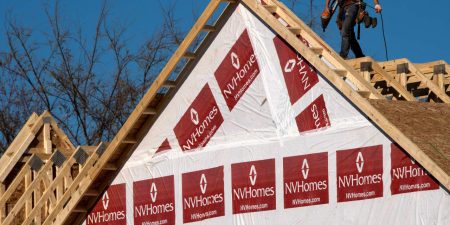WASHINGTON (Reuters) – Sales of new U.S. single-family homes fell more than expected in October, likely as higher mortgage rates reduced affordability, but the housing segment remains supported by a persistent shortage of previously owned properties on the market.
New home sales dropped 5.6% to a seasonally adjusted annual rate of 679,000 units last month, the Commerce Department said on Monday. September’s sales pace was revised lower to 719,000 units from the previously reported 759,000 units.
Economists polled by Reuters had forecast new home sales, which account for a small share of U.S. home sales, would fall to a rate of 723,000 units.
New home sales are counted at the signing of a contract, making them a leading indicator of the housing market. They, however, can be volatile on a month-to-month basis. Sales increased 17.7% on a year-on-year basis in October.
The stock of previously owned houses on the market is nearly 50% below it’s pre-pandemic level, according to the National Association of Realtors, which last week reported that home resales plunged to more than a 13-year low in October. Most homeowners have mortgage rates under 3%, making many reluctant to sell, boosting demand for new construction.
The rate on the popular 30-year fixed-rate mortgage jumped to an average of 7.79% in late October, the highest level since November 2000, according to data from mortgage finance agency Freddie Mac. Mortgage rates soared as the Federal Reserve aggressively raised interest rates to fight inflation.
The 30-year fixed rate mortgage has since dropped, and averaged a still-high 7.29% last week, tracking the decline in the amid optimism that the U.S. central bank was likely done hiking interest rates and could start easing monetary policy by mid-2024.
“Fed hikes are not having the desired effect because households have locked in low levels of mortgage rates during the pandemic,” said Torsten Slok, chief economist at Apollo Global Management (NYSE:) in New York.
Strong demand for new construction resulted in residential investment rebounding in the third quarter after contracting for nine straight quarters. The economy grew at a 4.9% annualized rate in the July-September quarter.
Read the full article here













